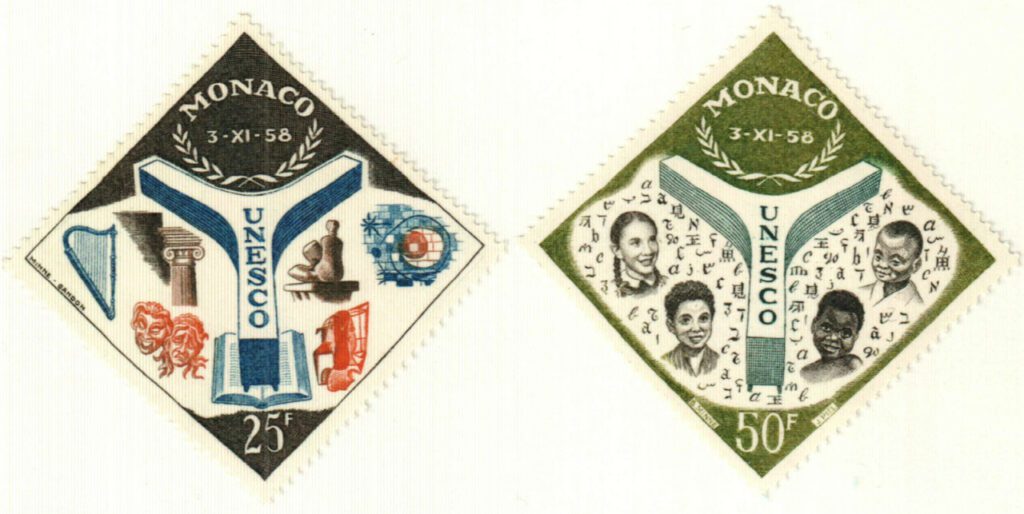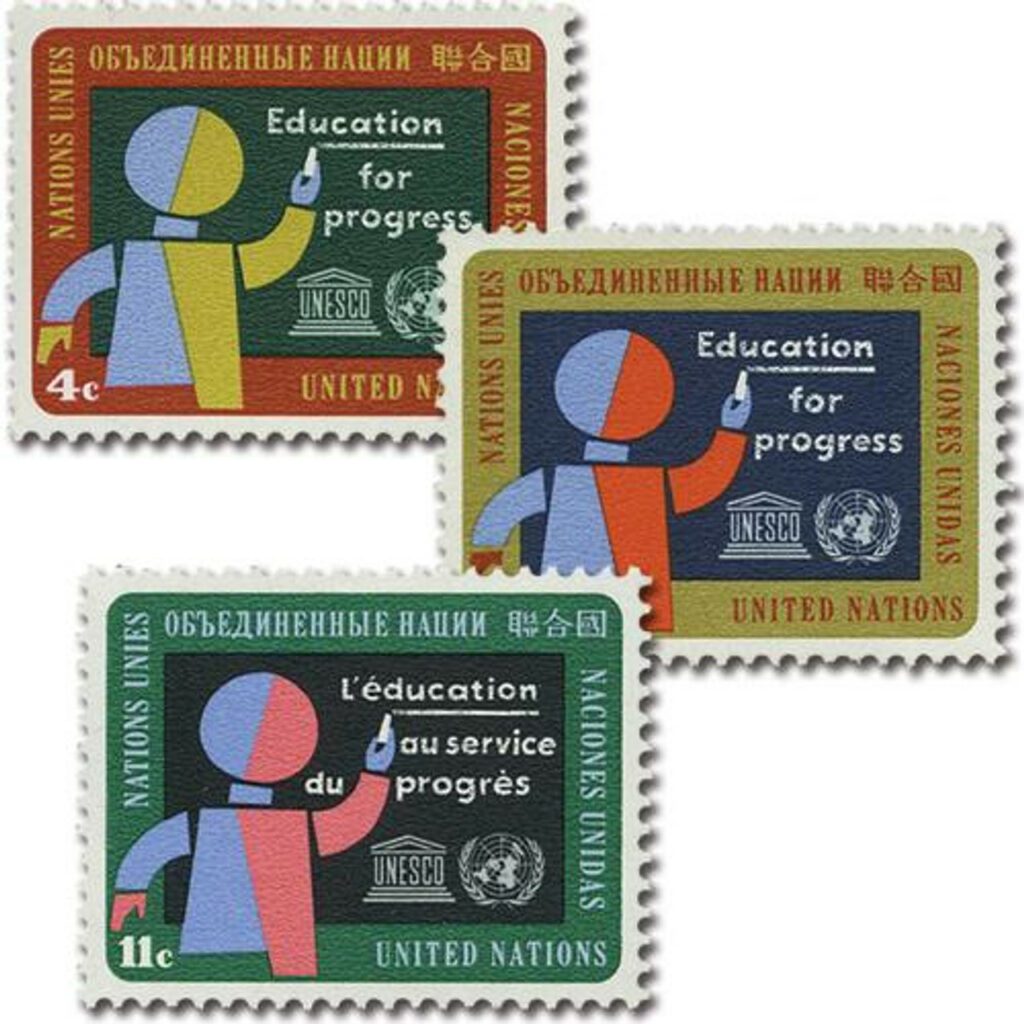On November 16, 1945, the UN created the United Nations Educational, Scientific, and Cultural Organization (UNESCO).
The purpose of this agency of the United Nations is to “contribute to peace and security by promoting international collaboration through education, science, and culture.” The goal is to further universal respect for justice and human rights.
Before the United Nations existed, the League of Nations recognized the importance of education for bringing peace and justice to developing nations. The International Committee in Intellectual Co-operation (CICI) was created in 1922. Much of the work of this agency was stopped because of World War II.
But as the war raged, the Allies signed the Atlantic Charter and the Declaration of the United Nations, eventually resulting in the formation of the United Nations in 1945. Even during the War, the Conference of Allied Ministers of Education met between 1942 and 1945 and called for an international educational and cultural organization. Representatives from 44 world governments met in London in 1945 and on November 16, introduced the constitution for UNESCO. The Constitution came into operation nearly a year later on November 4 when it was ratified by the 20th country necessary for passage.
One of the agency’s first works was basic education for the people of Haiti. This project was repeated in Afghanistan. In 1948, UNESCO recommended that all member states should offer free primary education to their children. This is an ongoing pursuit. In 2000, the World Education Forum was held and member states committed to achieving basic education for all.
UNESCO also tries to preserve cultures of the world. In 1960 the Aswan Dam was being built on the Nile River, and the Great Temple of Abu Simbel was in danger of being flooded. This agency’s campaign relocated the temple and over twenty other monuments throughout the world that were in harm’s way.
To ensure the conservation of mankind’s shared heritage, UNESCO adopted the “Convention Concerning the Protection of the World Cultural and Natural Heritage” in 1972. The World Heritage Committee selects sites and monuments considered to be of universal value to be inscribed on the World Heritage List. Those listed are then eligible for grants or loans for restorative purposes. Every year the UN issues stamps honoring sites in a specific area to raise awareness. To date, there are 1,073 World Heritage sites throughout the world, 12 of which are in the U.S.
Today, UNESCO has 195 member states. There are many field offices, with some serving three or more countries. The five major programs are: education, natural sciences, social and human sciences, culture, and communication and information. Some of the activities of this agency include teacher training and literacy programs and promoting independent media and freedom of the press. With the rapid development of new technology, many countries are lagging behind. The agency also has a program to try to “bridge the worldwide digital divide.”
Click here for more UNESCO stamps.
Click here to view UNESCO’s website and here to see the complete list of UNESCO World Heritage sites, many of which are featured on UN stamps.
Click here to see what else happened on This Day in History.





Interesting article. I would like to believe that the people of Haiti and Afghanistan are better off for the effort started 70 plus years ago. The world still has more work to do for these people.
No mention of the UNESCO Gift Stamp program?
On my wife’s and my visit to Paris, France some six years plus ago, we took a tour of the Eiffel Tower. From the highest point that one can ascend to, you can see the City of Paris below. As I scanned the view, I spotted the UNESCO building. Because of its distinctive design, it can be easily seen from such height. Also, I remember its design from the stamps that I have, and have seen over the years, regarding said place.